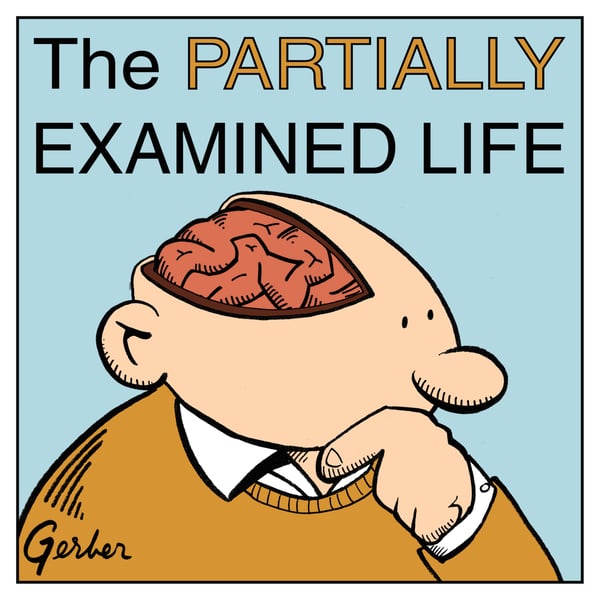PREMIUM-Ep. 261: Derek Parfit on Personal Identity (Part Two)
The Partially Examined Life Philosophy Podcast
Mark Linsenmayer
4.6 • 2.3K Ratings
🗓️ 25 January 2021
⏱️ 12 minutes
🧾️ Download transcript
Summary
More on Parfit's Reasons and Persons (1984), ch. 10-13. In this preview, we consider how Parfit deals with Bernard Williams' materialist thought experiment to show that the whole concept of personal identity doesn't make sense. Also, split brains!
To hear this second part, you'll need to go sign up at partiallyexaminedlife.com/support.
Transcript
Click on a timestamp to play from that location
| 0:00.0 | This is the preview for the partially examined life episode 261 Part 2 covering personal identity |
| 0:12.0 | as depicted in Derek Parfits' Reasons and Persons from 1984. |
| 0:16.0 | I'm going to play two sections here, first is right at the beginning and pick up where |
| 0:20.0 | Part 1 left off. |
| 0:23.0 | Seth, you were going to talk a little bit about what he's actually trying to show with |
| 0:27.0 | his spectra plot experiments, which is that we ought to be reductionists, so how do they show that? |
| 0:34.0 | This is at the end of 85, not page, but section 85. |
| 0:38.0 | So, when we considered the psychological spectrum, which was Parfits' initial hypothesis, |
| 0:45.0 | the psychological continuity, when we considered the psychological spectrum, |
| 0:49.0 | Williams' argument seemed to show that psychological continuity is not necessary for personal identity. |
| 0:55.0 | Physical continuity would be sufficient. |
| 0:58.0 | When we considered the physical spectrum, a similar argument seems to show that physical continuity is not |
| 1:04.0 | necessary for personal identity. |
| 1:06.0 | Psychological continuity would be sufficient. |
| 1:09.0 | We could accept both of these conclusions. |
| 1:11.0 | We could claim that either kind of continuity provides personal identity. |
| 1:14.0 | Although this hybrid view is coherent, it is open to grave objections. |
| 1:18.0 | One objection arises if we combine not our two conclusions, but the two arguments for these conclusions. |
| 1:24.0 | So, yeah, so he's setting us up for the 86th, the combined spectrum. |
| 1:28.0 | Exactly, exactly. |
| 1:30.0 | But I think the key thing here is that this, I think, gets it part of what's really perplexing about this issue, |
| 1:38.0 | is that we can take each physical atom or piece and replace it with an identical one. |
... |
Please login to see the full transcript.
Disclaimer: The podcast and artwork embedded on this page are from Mark Linsenmayer, and are the property of its owner and not affiliated with or endorsed by Tapesearch.
Generated transcripts are the property of Mark Linsenmayer and are distributed freely under the Fair Use doctrine. Transcripts generated by Tapesearch are not guaranteed to be accurate.
Copyright © Tapesearch 2025.

